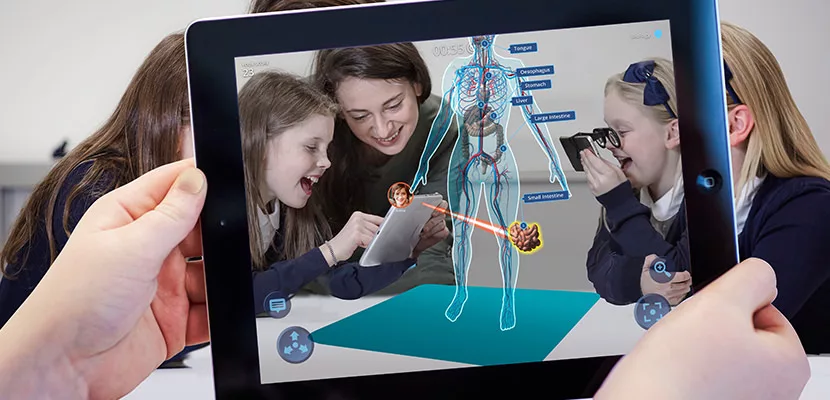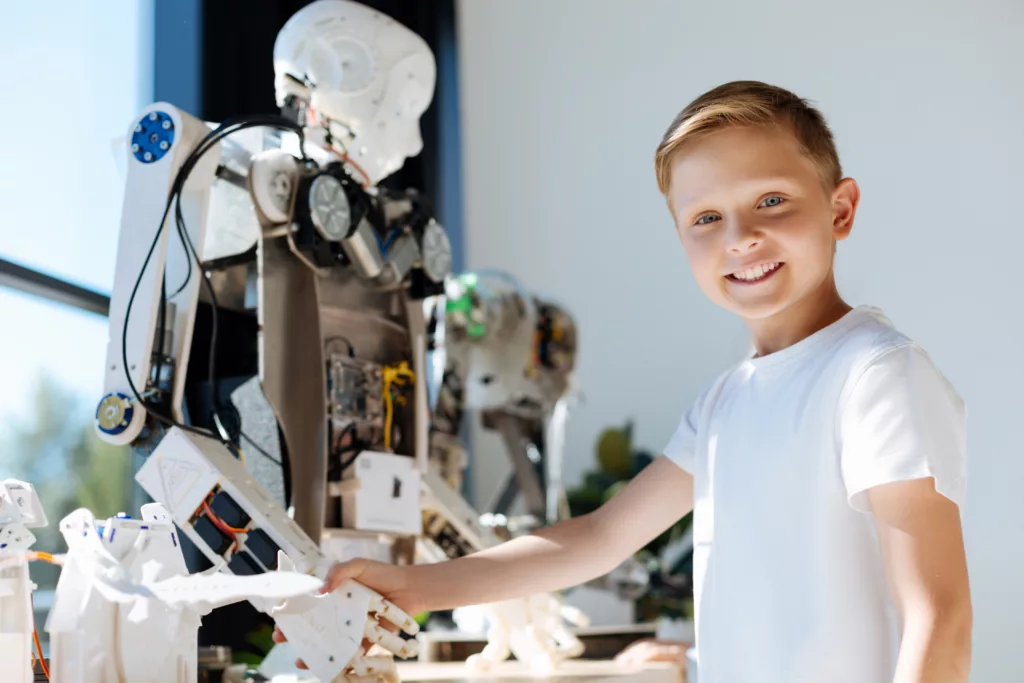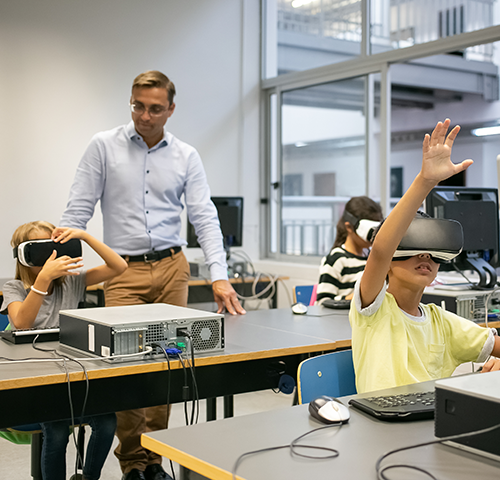
Commending Pioneering Black Tech Figures: A Tribute
October 11, 2023
Tech-Driven Housing Innovation: Bringing Shelter and Security to Millions
November 6, 2023Empowering Education: Unleashing the Potential of Technology and AI for Inclusive Learning
Empowering Education
Unleashing the Potential of Technology and AI for Inclusive Learning
Technology holds the key to a revolution in education like we’ve never seen before. It’s not a threat; it’s an exhilarating opportunity, a chance to redefine how we learn, grow, and connect. The global EdTech market is expected to reach a value of $696.04 billion by 2028 from $297.56 billion in 2022, growing at a Compound Annual Growth Rate of 15.22%.
Imagine classrooms without boundaries, where students from every corner of the globe can learn from the finest educators. Think of personalised learning pathways, tailored to each individual’s unique strengths and needs. Picture a world where barriers of access and opportunity crumble, where quality education is not a privilege but a fundamental right.
The learner of the future will be an explorer, armed with a digital toolkit that transcends the limitations of physical space and time.
It’s not about replacing teachers; it’s about empowering them with cutting-edge tools to ignite the sparks of curiosity in every student.
A Journey Through the Evolution of Learning
Before our classrooms were reshaped by connected technology, consider how calculators simplified mathematics, how film brought history to life, and how the printing press enabled mass production of textbooks. These innovations, though from different eras, all share the common goal of advancing education.
In this era of infinite possibilities, the remarkable strides made by technology companies in the realm of education are nothing short of awe-inspiring. They understand that knowledge knows no boundaries and that opportunity must be a birthright, not a privilege. Google, through their Google for Education initiative, have bridged the digital divide by providing schools with affordable access to devices, internet connectivity, and a wealth of educational resources.
Microsoft Education is transforming the classroom, ensuring that every student, no matter their background, has access to powerful tools like Surface Go and Teams for Education that ignite their curiosity and imagination. Amazon Web Services, with its scalable cloud solutions, has unleashed the potential of schools to adapt and thrive, even in the face of the most challenging circumstances.
Access to Education as a Human Right
Access to education is a human right, and it’s essential that no one is left behind, including those with disabilities. Take the example of Braille, invented by Louis Braille in 1824. However, even today, only 10% of the world’s visually impaired can read Braille.
Yet, technology has transformed their learning experience. ‘Talking books,’ pioneered by The American Foundation for the Blind, gave visually impaired individuals the joy of literature.
Learning, Unknowingly
Today’s technology has made learning intuitive. Many times, we don’t even realise we’re learning. Games like Minecraft promote creativity and problem-solving, while Dr. Kawashima’s Brain Training sharpens our cognitive skills. But gamified learning isn’t a recent concept; it dates back to the 1970s.
Games like the Oregon Trail and Lemonade Stand taught history and economics respectively, making learning enjoyable.
From Models to Augmented Reality

We’ve come a long way from the days of static models. Teachers once relied on three-dimensional dioramas to teach biology, but now we have technologies like augmented reality that can bring any subject to life.
Imagine studying the planets or photosynthesis through immersive experiences.
Microsoft HoloLens has created a mixed reality learning environment for medical students and practitioners. Students can flow through the bloodstream, isolate, enlarge, and even go inside the human body to learn not only anatomy but also how to cure various medical diseases.
The Promise of AI in Education
In 2023, AI is the buzzword on everyone’s lips. Yet, it’s not entirely new. As I explored in my blog about AI governance recently, we must embrace AI and maximise its potential properly while investing in programmes to ensure it’s used effectively and to mitigate the risks involved.
Let me paint a picture for you: AI algorithms, like gifted educators, do more than just proofreading. They become teachers’ right hand, freeing up precious time, and allowing them to craft lessons tailored to each student’s unique needs. The digital tutor, guided by these algorithms, becomes the mentor that every student deserves. By tracking students’ development and engagement, teachers can focus on specific aspects of their teaching, thus ensuring that every student progresses.

The integration of AI in education holds immense promise, but its success hinges on the foundation of good data and governance. Ensuring the quality and integrity of the data used for AI-driven educational applications is crucial to provide accurate insights into student performance and needs.
Moreover, robust governance practices are vital to address concerns related to privacy, equity, and transparency. Effective data management and governance not only enhance the effectiveness of AI tools in education but also build trust among stakeholders, ensuring that these innovations empower students while safeguarding their rights and privacy.
In conclusion, the integration of technology and AI into education is a journey of innovation, inclusion, and limitless potential. The digital age has opened doors to education for all, and it’s our responsibility to ensure that these doors remain wide open, welcoming learners of all ages, backgrounds, and abilities. Together, we can shape a world where education is truly a right, not a privilege.
So, let’s embrace technology, let’s harness AI, and let’s lead the way towards a future where equality and education walk hand in hand, for the benefit of all.

Cecilia Harvey is an award-winning tech founder, author, and entrepreneur. Cecilia is the founder of Tech Women Today, the global digital platform to showcase women in technology, and a resource for non-technical female entrepreneurs who want to understand how to leverage technology to grow and scale their businesses.




